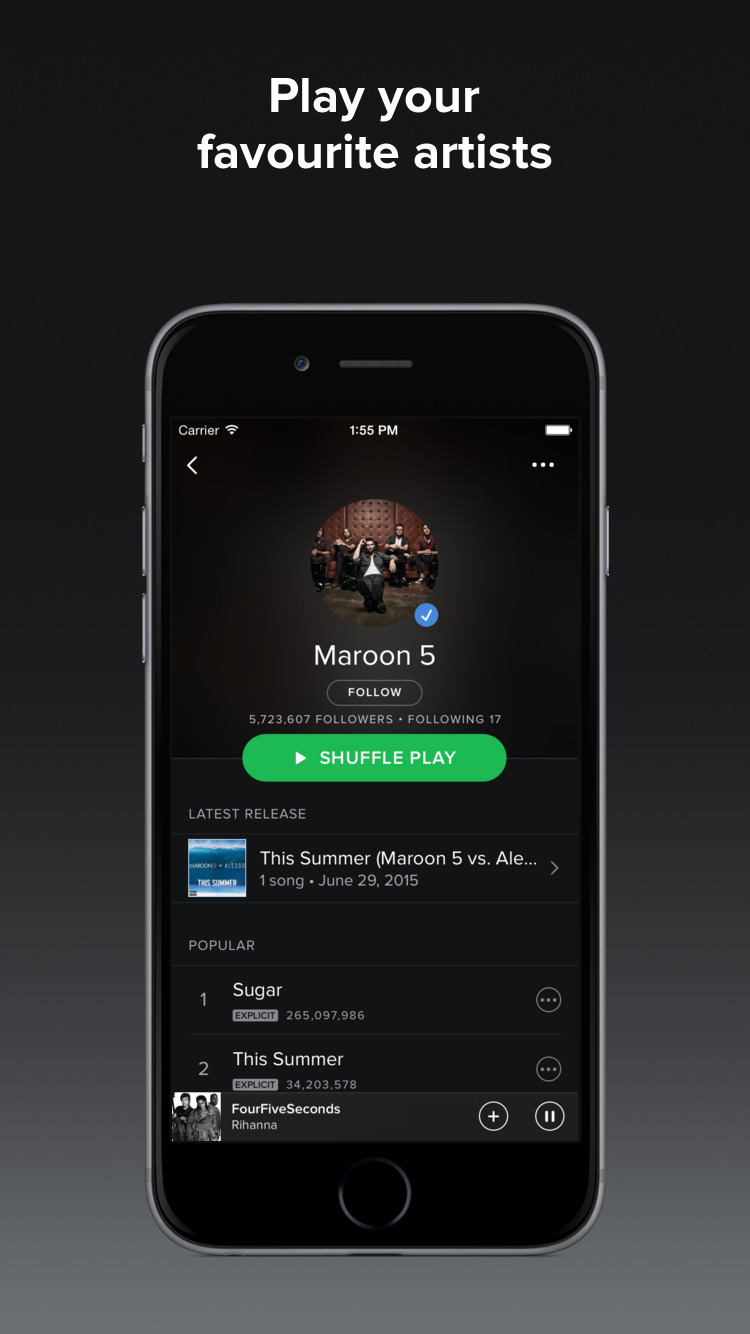- The Amazon Echo is the body and Alexa is the brains, but you're going to need to connect to a Wi-Fi network in order to receive the full capabilities of both. Whether you've changed your home internet recently, or you're trying to get connected at a friend's house or hotel, changing the Wi-Fi network assigned to your Alexa speaker is both quick and easy.
- Pair an Echo with a Mac Log in to your Alexa account by going to alexa.amazon.com. Select Settings in the left pane. Choose your Echo in the list of devices. Select Bluetooth. Select Pair a New Device; Alexa will search for available devices. Select the Bluetooth icon in the menu bar.
- Select the menu icon, and then Add Contact. Enter a name and phone number, and then select Save. The contact is available from the Contacts list in the Alexa app.
Asking Google Home or Amazon Echo to play any song you like from the Spotify catalog is extremely liberating—but until there is support for the Spotify Connect feature, these devices can only play back music on their own speakers, or on speakers to which they're directly connected. I have AirPlay speakers all over the house and I would like to be able to tell Alexa or Google Assistant to play a given song in my living room or my kitchen or in my office—or any combination of those locations—but that's just not possible today. This was the biggest of the complaints I wrote about last week in my comparison of Echo and Home.
Persistence and hackery can overcome almost any tech roadblock though. Over the weekend I strung together a series of tools that allow me to issue voice commands to Google Home (which I prefer slightly) to select music on Spotify, then switch the playback to the Mac mini that sits at the heart of my home theater setup, and from there pipe music to the various AirPlay speakers in the house.
Even though it seems that Home for macOS is a little half-baked without the ability to add accessories, it's still a useful tool to have with convenient controls and notifications. Using the Home app from your Mac means you don't have to look for your iPhone or tablet if you're at the desk and want to control your lighting or summon a live.
What's more interesting is that the basics of this solution could theoretically allow you to control almost anything on your Mac via voice—and it's incredibly easy to set up. It starts with the invaluable IFTTT service, which supports both Google Assistant and Alexa. You can define your own custom phrases to serve as IFTTT triggers, which can then generate simple text files on a cloud storage service like Dropbox, which can kick off automated routines on your Mac. Os x yosemite 10 11 download. This is what it looks like to set up the IFTTT component:
When you set Dropbox to sync the resulting text files to your Mac's hard drive, the key is to do so to directories that you've loaded with macOS's Folder Actions feature. Basically, when the text files are added to these folders, they act as triggers for Automator actions, which can do tons of stuff, including run AppleScript code—which in turn can do even more stuff. Once Automator is done, it can even clean up after itself by trashing the text file it used as a trigger, if you need.
This is the basic approach I use to enable Google Home to play music throughout my house, though there are more steps involved, and some janky workarounds. Using the Home's built-in voice commands I search for and play the songs I want, just as you would normally do. Then I speak a custom phrase like 'Switch tunes to home theater' (most music playback-related phrases are reserved by Google Home so you can't just say 'Ok Google, play music on my home theater') to kick off an IFTTT applet. Battle net standalone installer. The applet saves a text file in Dropbox, which syncs to my Mac to a directory with a folder action attached to it. That action runs a bit of AppleScript to open Spotify and, through the brute force of repeating pre-recorded mouse locations and clicks (courtesy of an extremely unsexy app called Mac Auto Mouse Click), it opens the Spotify Connect menu and switches the playback device from Google Home to the Mac mini. Then finally (whew), Automator also tells AirFoil to redirect that music to a pre-defined set of AirPlay speakers. All of a sudden, the music I asked for in the kitchen is playing all over the house.
Granted, the setup is hardly elegant, to say the least. The beauty of it is that it's incredibly simple to set up, easy enough that I've created a series of similar commands to play and pause the music, jump back and forward, etc. As I've said in the past, I'm not a programmer by any means—before this weekend I had never spent more than a few minutes in Automator or writing AppleScript—so the learning curve is shallow.
This kind of rudimentary but highly engaging automation is sure to become more and more central to consumers as voice-powered interfaces gain ground. So it's all the more concerning that Apple parted ways with its longtime champion of automation products last fall, though perhaps there are other plans afoot to continuing evolving the automation of Apple's devices and software. Looking ahead at a future filled with these kinds of devices, as users we are only going to want the apps and services that we use to be more scriptable, more responsive to integrations. And we'll want that ability to automate to be simple enough that we can put together the missing flows and actions that we want ourselves.
+Apple Music for Alexa is available only in Austria, Australia, Brazil, Canada, France, Germany, India, Ireland, Italy, Japan, Mexico, New Zealand, Spain, United Kingdom, and United States.
Here's what you need
- An Apple Music subscription. If you're not a subscriber, you can join on your iPhone, iPad, or iPod touch, or on your Android device.
- An Amazon Echo, Amazon Fire TV, or Alexa-enabled Sonos speaker that you already set up with the Amazon Alexa app on your iOS or Android device.
- The iOS or Android device that you already set up with Alexa. Make sure that you update to the latest iOS and check the App Store to see if there are updates for the Amazon Alexa app. If you use an Android device, check the Google Play Store for any updates to the Apple Music app or Amazon Alexa app.
Set up Apple Music with Alexa
- Open the Amazon Alexa app, then tap the menu button in the upper-left corner.
- Tap Settings.
- In Alexa Preferences, tap Music.
- Tap Link New Service.
- Tap Apple Music.
- Tap Enable To Use.
- Follow the instructions to sign in with your Apple ID. You can get help to sign in using two-factor authentication.

You can also enable the Apple Music skill in the Alexa skill store on the web.
Set up Apple Music as your default music service

You can also enable the Apple Music skill in the Alexa skill store on the web.
Set up Apple Music as your default music service
If you don't want to say 'on Apple Music' each time you ask Alexa to play something, you can make Apple Music your default music service on Alexa. Here's how.
- Open the Amazon Alexa app, then tap the menu button in the upper-left corner.
- Tap Settings.
- Tap Music.
- Under Account Settings, tap Default Services.
- Tap Apple Music.
Ask Alexa to play your music
Chrome 30 offline installer. You can ask Alexa to play songs, artists, albums, or genres from Apple Music. You can also play playlists from Apple Music's editors or playlists in your iCloud Music Library. Say something like 'Alexa, play Chill radio on Apple Music,' or 'Alexa, play Ariana Grande on Apple Music.'
If you want to listen to Apple Music in stereo or across multiple rooms, create a Multi-Room Music group in the Alexa app. After you set this up, you can listen to Apple Music on two or more Echo devices at the same time.
Unlink Apple Music and Alexa
- Open the Amazon Alexa app, then tap the menu button in the upper-left corner.
- Tap Settings.
- In Alexa Preferences, tap Music.
- Tap Apple Music.
- Tap Disable Skill.
Get help
Add Alexa To Computer
If you need help setting up or using Alexa, your Amazon Echo device, or your Fire TV device, get help from Amazon.
If you need help setting up or using your Sonos speaker, get help from Sonos.
Learn more
Add Alexa To Macbook
- You can use Siri to play Apple Music on your Apple devices. With Siri, you can choose from a wider variety of commands.
- Learn more about how to use Apple Music in the Music app.
- You can also play Apple Podcasts with Alexa.
